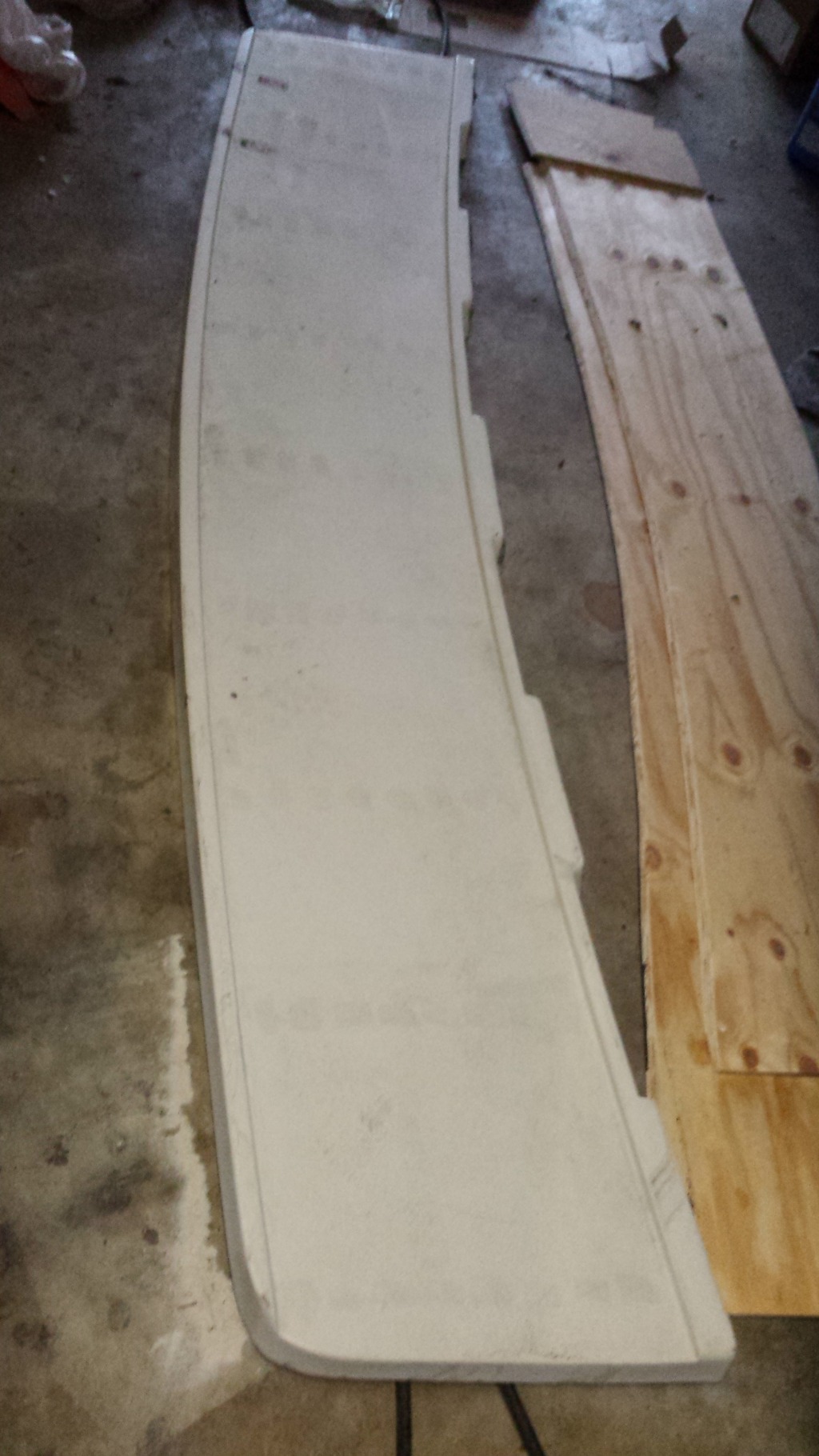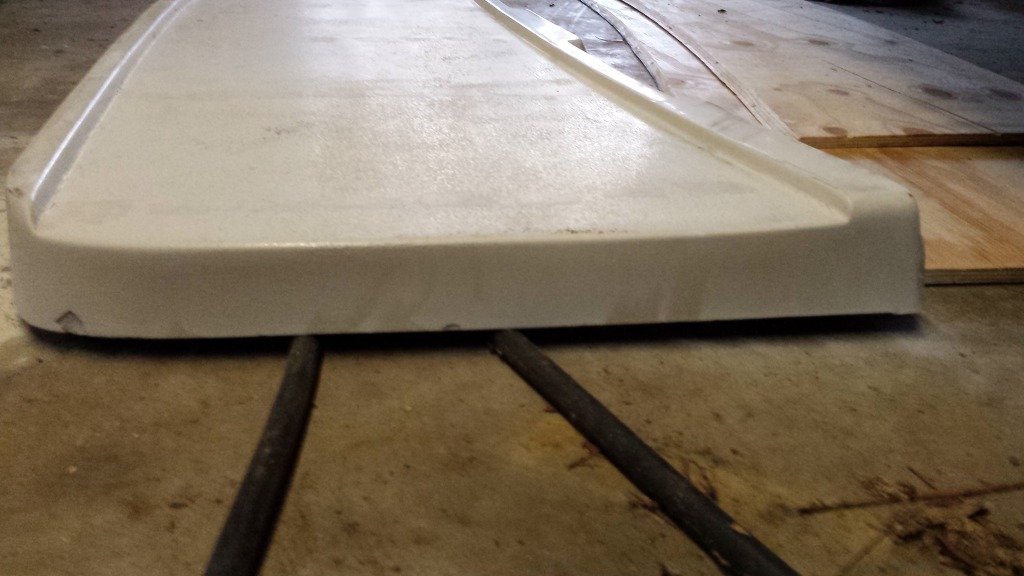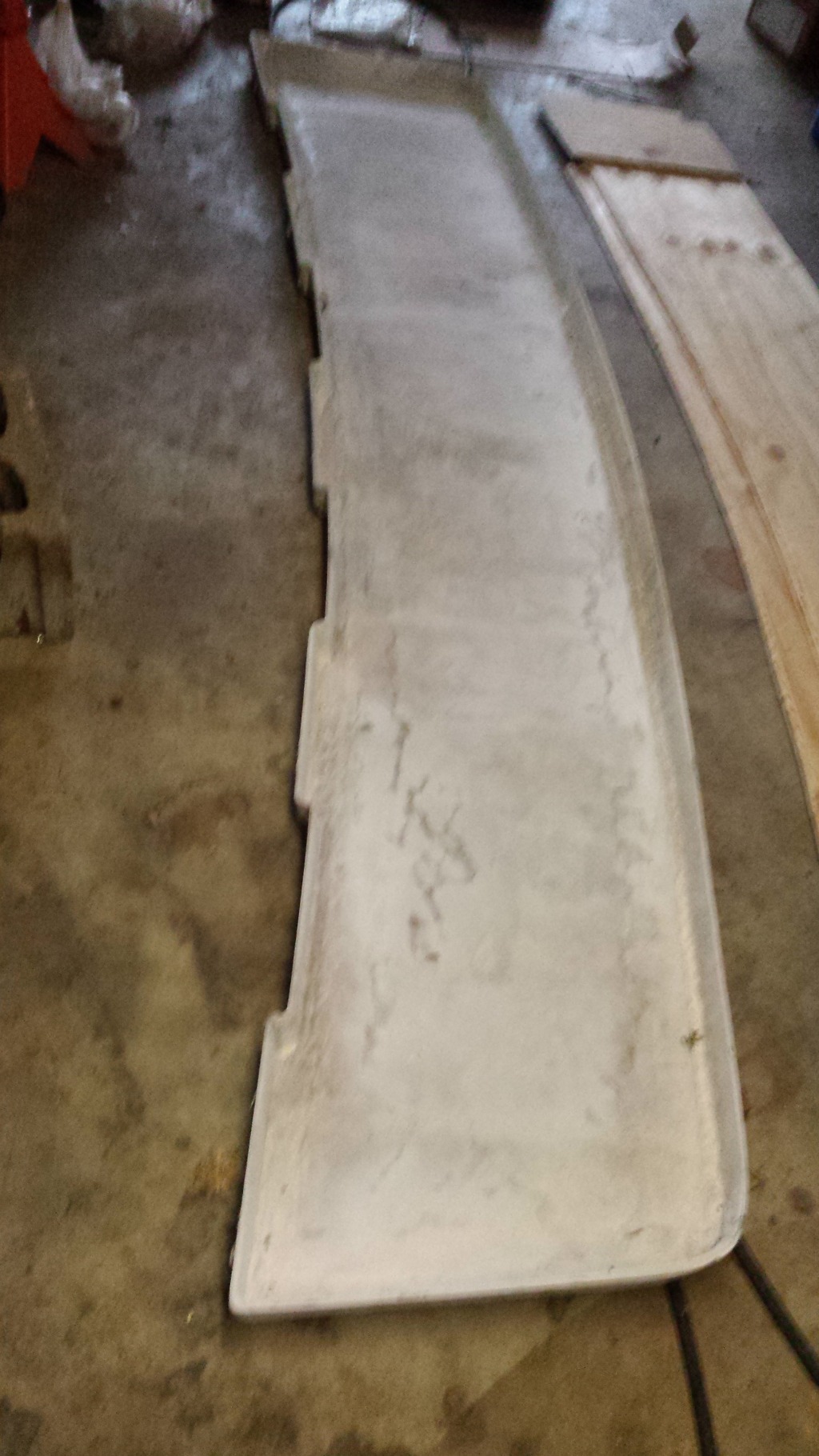slowandsteady
Senior Member
My 1983 Mainship has a factory fiberglass swim platform. In between 1/2" high fiberglass ridges were strips of teak. They were sanded and varnished over the years and were looking kind of ragged so this year when I hauled the boat out I removed the platform. I removed the teak and the factory platform steps and it is in pretty good shape. Ideally, I would like to eliminate the raised areas and make it a smooth, level platform with a non skid surface, maintenance free. While I'm at it, I would also like to laminate a piece of 3/4" marine plywood to the underside to install a 4 step under mount ladder to. Since I have never done fiberglass work, I have been searching around to educate myself on what method to use and what products/systems to use. There's a lot of info out there but I haven't found anything that describes exactly what I should do.
Here is what I want to do and how I think I want to do it:
On the underside of the platform I will sand the perimeter of the location of the new plywood that I will mount the ladder. It is wavy because it kind of mirrors the raised ridges. Should I make it smooth and level or will the cloth follow the wavy contours? I will round the edges of the board where I want to wrap the cloth from the plywood to the platform. I will coat all sides and edges of the plywood with resin before I mechanically fasten it to the platform. I will also install blind fasteners so that I don't have fasteners showing on the top of the platform. Which products shall I use? Polyester or epoxy? What kind of cloth should I use and how many layers?
On the top of the platform what I plan on doing is filling the low areas with a material to the top surface of the raised ridges. I was going to use some 1/2" thick marine plywood. Should I screw the filler strips or should I use some type of adhesive? I assume I will have to rough up the lower surface if I chemically bond it. Right now it is gel coat in very good condition because it's been covered by the teak strips. Since the ridges do not have square edges (they are on a slight angle) there will be spaces on each side of the filler strips. Do I have to fill these gaps in with some type of filler or will the cloth bridge them? I would then like to glass over the whole thing from the bottom edge, over the top and down the other edge. Can I glass over the existing gel coat easily? Polyester or epoxy? How many plys of what kind of fabric? If I use epoxy, I can't use gelcoat, right?
As you can see, I have more questions than answers. There are so many products, I don't where to start when I gather my materials.
If there is anyone out there that has done something similar to this, I would appreciate a little advise or maybe you can point me in the right direction.
Thanks!
Here is what I want to do and how I think I want to do it:
On the underside of the platform I will sand the perimeter of the location of the new plywood that I will mount the ladder. It is wavy because it kind of mirrors the raised ridges. Should I make it smooth and level or will the cloth follow the wavy contours? I will round the edges of the board where I want to wrap the cloth from the plywood to the platform. I will coat all sides and edges of the plywood with resin before I mechanically fasten it to the platform. I will also install blind fasteners so that I don't have fasteners showing on the top of the platform. Which products shall I use? Polyester or epoxy? What kind of cloth should I use and how many layers?
On the top of the platform what I plan on doing is filling the low areas with a material to the top surface of the raised ridges. I was going to use some 1/2" thick marine plywood. Should I screw the filler strips or should I use some type of adhesive? I assume I will have to rough up the lower surface if I chemically bond it. Right now it is gel coat in very good condition because it's been covered by the teak strips. Since the ridges do not have square edges (they are on a slight angle) there will be spaces on each side of the filler strips. Do I have to fill these gaps in with some type of filler or will the cloth bridge them? I would then like to glass over the whole thing from the bottom edge, over the top and down the other edge. Can I glass over the existing gel coat easily? Polyester or epoxy? How many plys of what kind of fabric? If I use epoxy, I can't use gelcoat, right?
As you can see, I have more questions than answers. There are so many products, I don't where to start when I gather my materials.
If there is anyone out there that has done something similar to this, I would appreciate a little advise or maybe you can point me in the right direction.
Thanks!

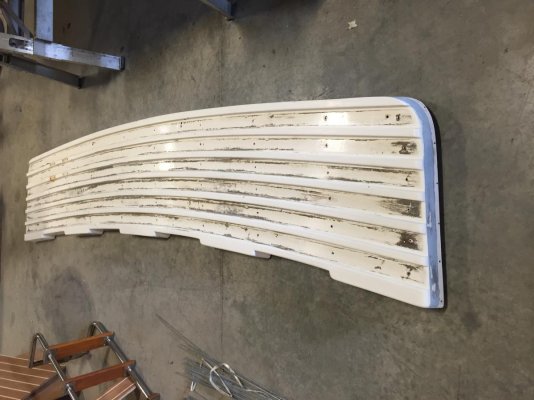
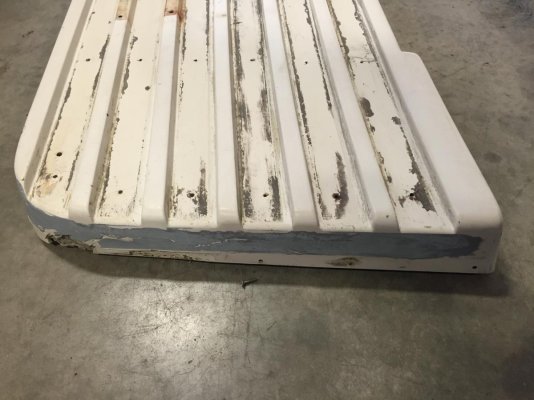
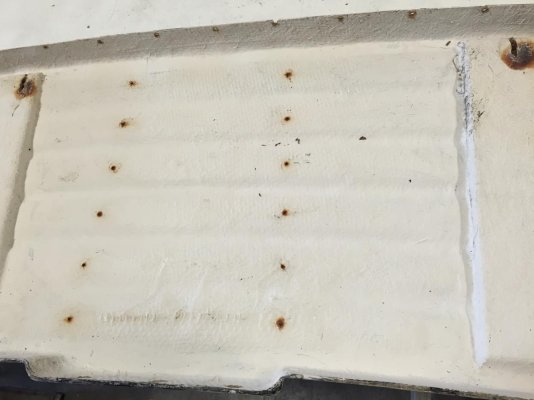
 There ya go!
There ya go!